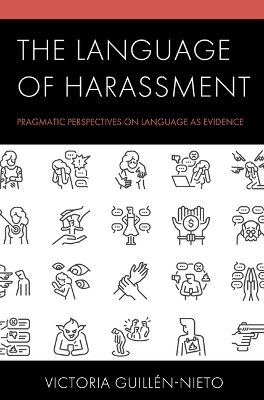
The Language of Harassment
Pragmatic Perspectives on Language as Evidence
Seiten
2024
Lexington Books (Verlag)
978-1-7936-1907-5 (ISBN)
Lexington Books (Verlag)
978-1-7936-1907-5 (ISBN)
This book addresses the lack of research on harassment by offering a thorough linguistic analysis of the social phenomenon. By applying interactional pragmatics, the author sheds light on the key elements of harassment, which includes hostile and unethical communication, malicious intentions, power imbalance, and harm caused to the victim.
The Language of Harassment: Pragmatic Perspectives on Language as Evidence addresses harassment head-on by conducting a thorough linguistic analysis of this pervasive social phenomenon. Utilizing a dearth of linguistic research on this topic, this book investigates the strategic language used by harassers to convey their ill intentions and inflict harm upon their victims. The linguistic analysis focuses on how harassment is constructed through verbal and physical interactions between the perpetrator or group of perpetrators and the victim at a discourse level. The author revisits several court cases tried in the US and Europe to show the phenomenal difficulties victims face to support their claims with evidence. This volume applies pragmatic linguistic theories to shed light on the defining elements of harassment, which include repetitive hostile and unethical communication, ill intentions, power imbalances, and harm inflicted upon the victim. In addition, the author illustrates the linguistic analysis through live cases of workplace mobbing, school bullying, sexual harassment, psychological harassment, stalking, and sexting.
The Language of Harassment: Pragmatic Perspectives on Language as Evidence addresses harassment head-on by conducting a thorough linguistic analysis of this pervasive social phenomenon. Utilizing a dearth of linguistic research on this topic, this book investigates the strategic language used by harassers to convey their ill intentions and inflict harm upon their victims. The linguistic analysis focuses on how harassment is constructed through verbal and physical interactions between the perpetrator or group of perpetrators and the victim at a discourse level. The author revisits several court cases tried in the US and Europe to show the phenomenal difficulties victims face to support their claims with evidence. This volume applies pragmatic linguistic theories to shed light on the defining elements of harassment, which include repetitive hostile and unethical communication, ill intentions, power imbalances, and harm inflicted upon the victim. In addition, the author illustrates the linguistic analysis through live cases of workplace mobbing, school bullying, sexual harassment, psychological harassment, stalking, and sexting.
Victoria Guillén-Nieto is associate professor of applied linguistics at the University of Alicante.
Preface
Acknowledgments
Introduction: Approaches to Harassment
Chapter 1: Harassment as a Legal Problem
Chapter 2: The Defining Elements of Harassment
Chapter 3: Repeated Acts of Hostile and Unethical Communication
Chapter 4: Ill Intentions
Chapter 5: Power Imbalance and Harm Inflicted upon the Target
Conclusions
References
Index
About the Author
| Erscheinungsdatum | 29.10.2024 |
|---|---|
| Verlagsort | Lanham, MD |
| Sprache | englisch |
| Maße | 152 x 229 mm |
| Themenwelt | Geisteswissenschaften ► Sprach- / Literaturwissenschaft ► Sprachwissenschaft |
| ISBN-10 | 1-7936-1907-7 / 1793619077 |
| ISBN-13 | 978-1-7936-1907-5 / 9781793619075 |
| Zustand | Neuware |
| Informationen gemäß Produktsicherheitsverordnung (GPSR) | |
| Haben Sie eine Frage zum Produkt? |
Mehr entdecken
aus dem Bereich
aus dem Bereich
Das umfassende Standardwerk auf der Grundlage der aktuellen amtlichen …
Buch | Hardcover (2024)
Duden (Cornelsen Verlag)
35,00 €
und wie man sie vermeidet
Buch | Softcover (2022)
C.H.Beck (Verlag)
14,00 €


